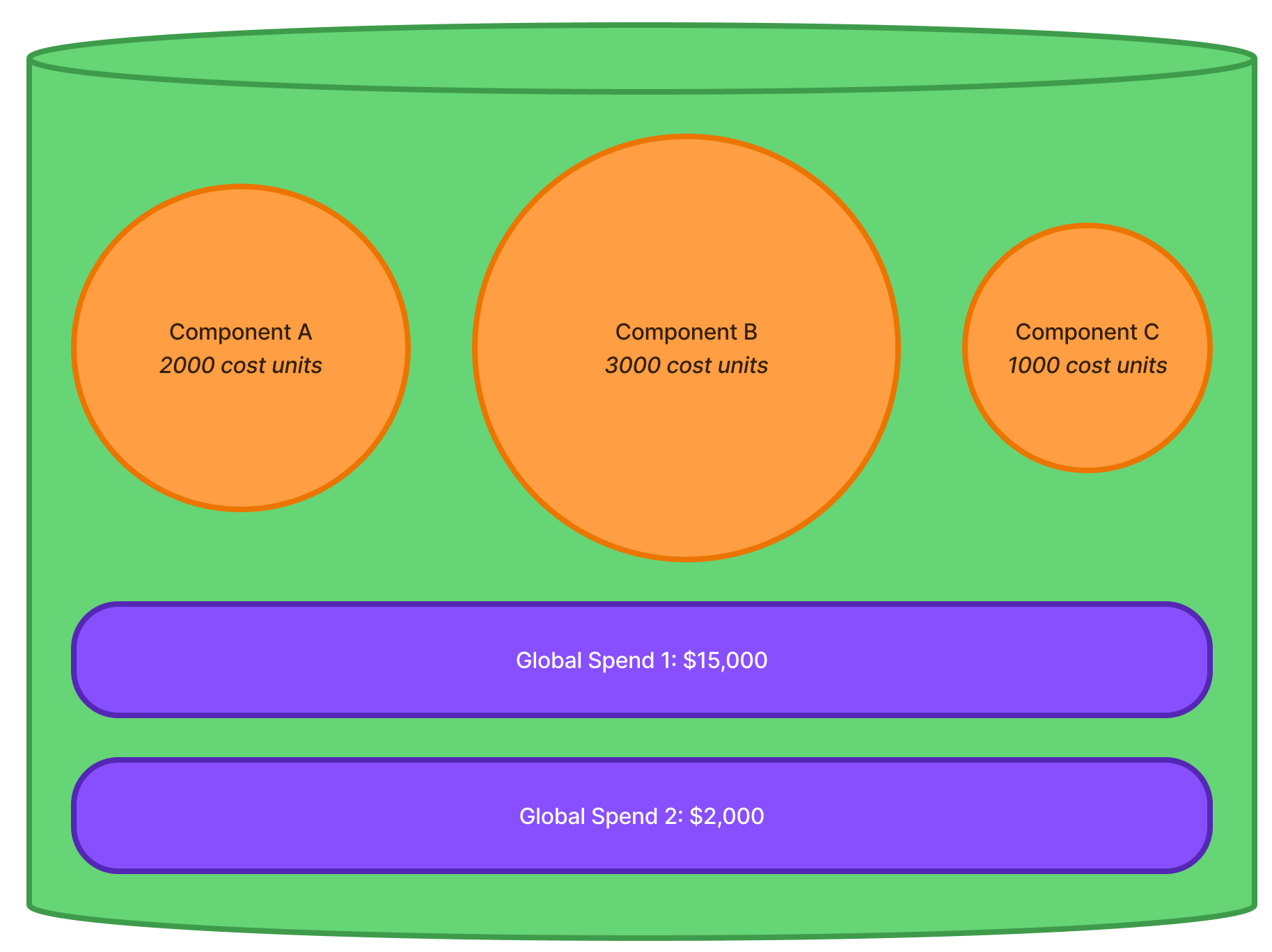Capital Spend Share Overrides
By now you are familiar with how Capital Spends (Global, spends, Linked spends, and a combination or Hybrid using both) can be used within the Metrix Asset Management system to attribute capital expenditure to your various Budget Buckets. You are also familiar with how the system uses Budget Bucket Capitalisation Shares to determine how any capital expenditure against the Bucket is capitalised at the end of the project.
This section expands upon these concepts and introduces the concept of Spend Capitalisation Share Overrides, which can be used to instruct the system on how to allocate the capital expenditures for a specific Spend entry.
By default, the system will use the Capitalisation Shares set on the Budget Bucket to determine how to allocate the capital expenditures for Spend entries. This article is discussing the use of Spend Capitalisation Share Overrides, which can be used to essentially ignore the Budget Bucket Capitalisation Shares and apply a different set of Capitalisation Shares for the specific Spend entry only.
Below is an example of how Capitalisation Shares Overrides can be used, and what impact that has on the final recognition figures for Component Items in a Budget Bucket in regard to their end of project capitalisation. For this example, we will use the simple global spend example from our previous section - as the spending structure is not the focus here, rather the capitalisation shares are.
Also, for the sake of simplicity, we will assume that the Budget Bucket has a simple Capitalisation Share structure of 100% New (that is, we’re building new Assets).
The details of the above spends are as follows:
| Spend | Value | New Override | Renewal Override | Upgrade Override |
|---|---|---|---|---|
| Global Spend 1 | $15,000 | - | - | - |
| Global Spend 2 | $2,000 | 0% | 0% | 100% |
The above table is essentially stating that the first spend does NOT have any overrides defined, and therefore the system will honour the Budget Bucket Capitalisation Shares of 100% New when capitalising this spend. The second spend does have defined overrides, and therefore the system will ignore the Budget Bucket Capitalisation Shares and apply these overrides when capitalising this spend.
This ultimately results in the following capitalisation figures for the two spends:
| Spend | Value | New Capitalisation | Renewal Capitalisation | Upgrade Capitalisation |
|---|---|---|---|---|
| Global Spend 1 | $15,000 | 100% | 0% | 0% |
| Global Spend 2 | $2,000 | 0% | 0% | 100% |
As you can see, the first spend simply inherits the Capitalisation Shares from the parent Budget Bucket. These breakdowns would result in the following capitalisation figures for the underlying components:
| Component Item | Capitalisation Outcome |
|---|---|
| Item 1 | $15,000 capitalised as New infrastructure |
| Item 2 | $2,000 capitalised as an Upgrade of the existing infrastructure |
This example, while simple, demonstrates the concept of Spend Capitalisation Share Overrides. The system will always honour the Capitalisation Shares set on the Budget Bucket, unless you specifically override them at the Spend level.
